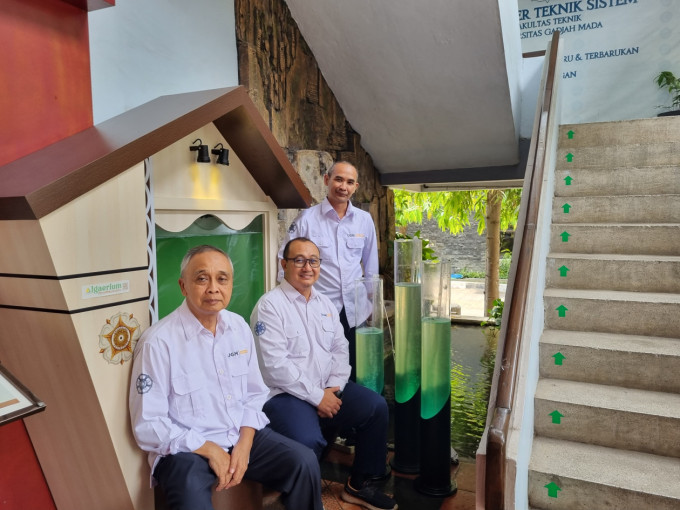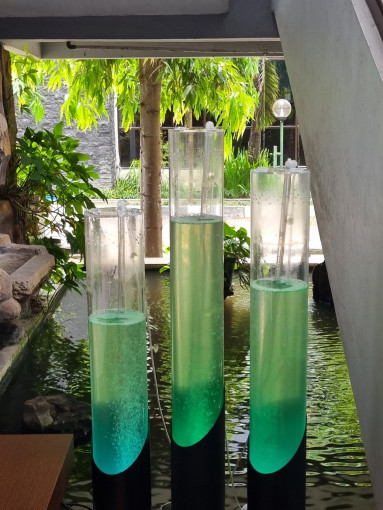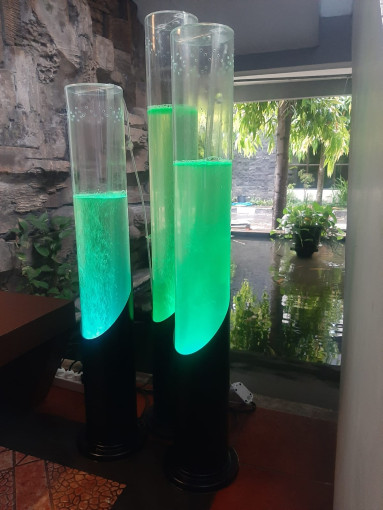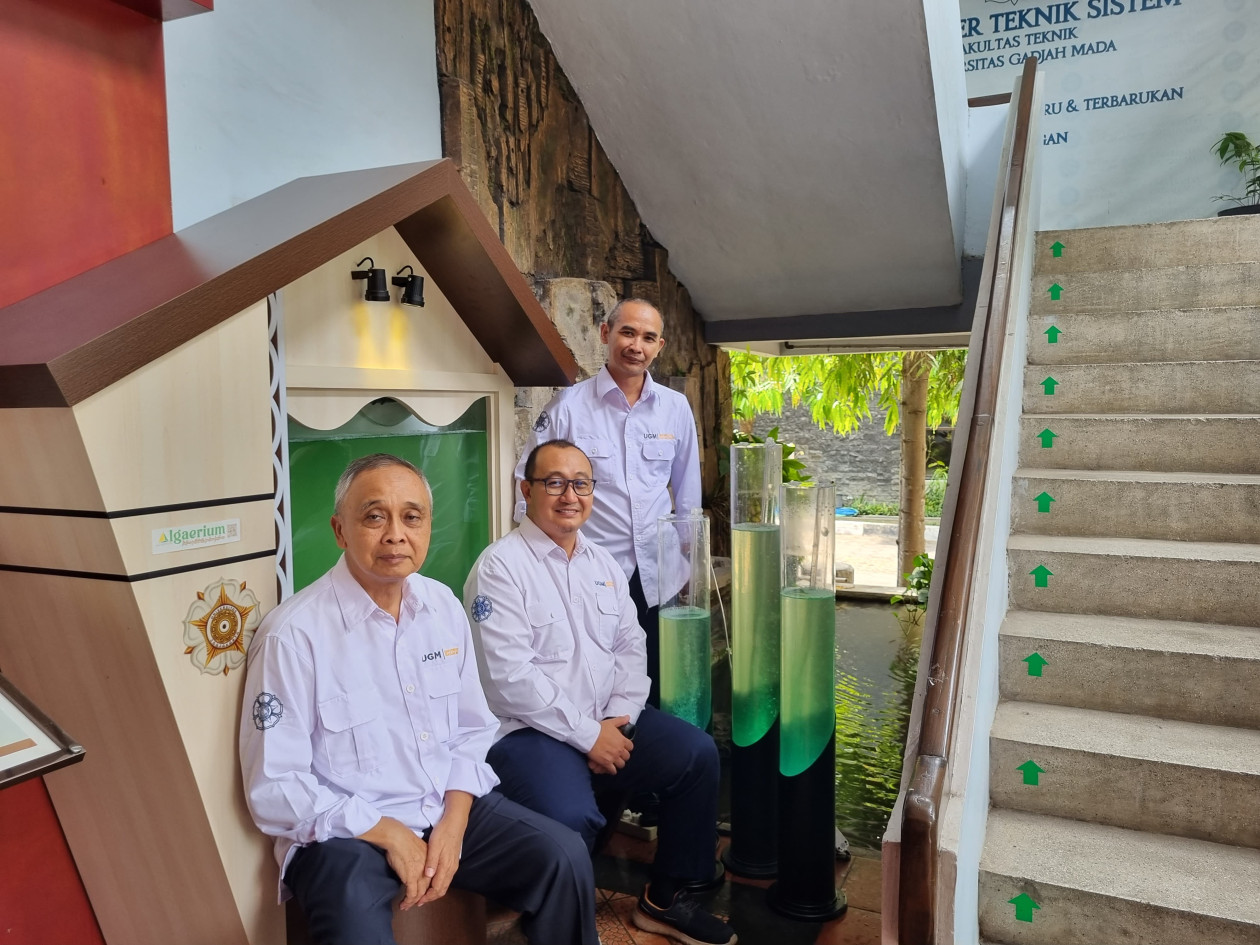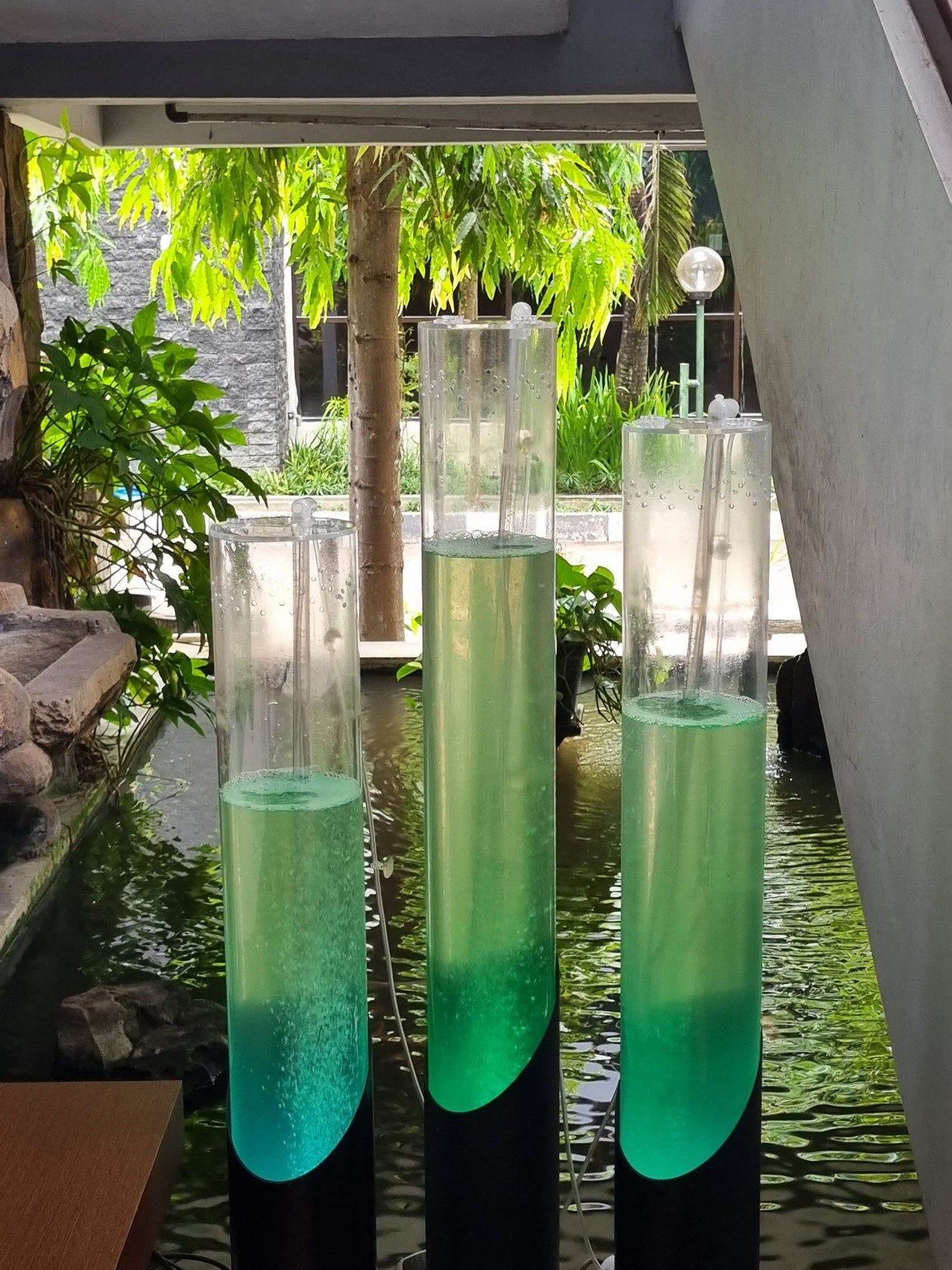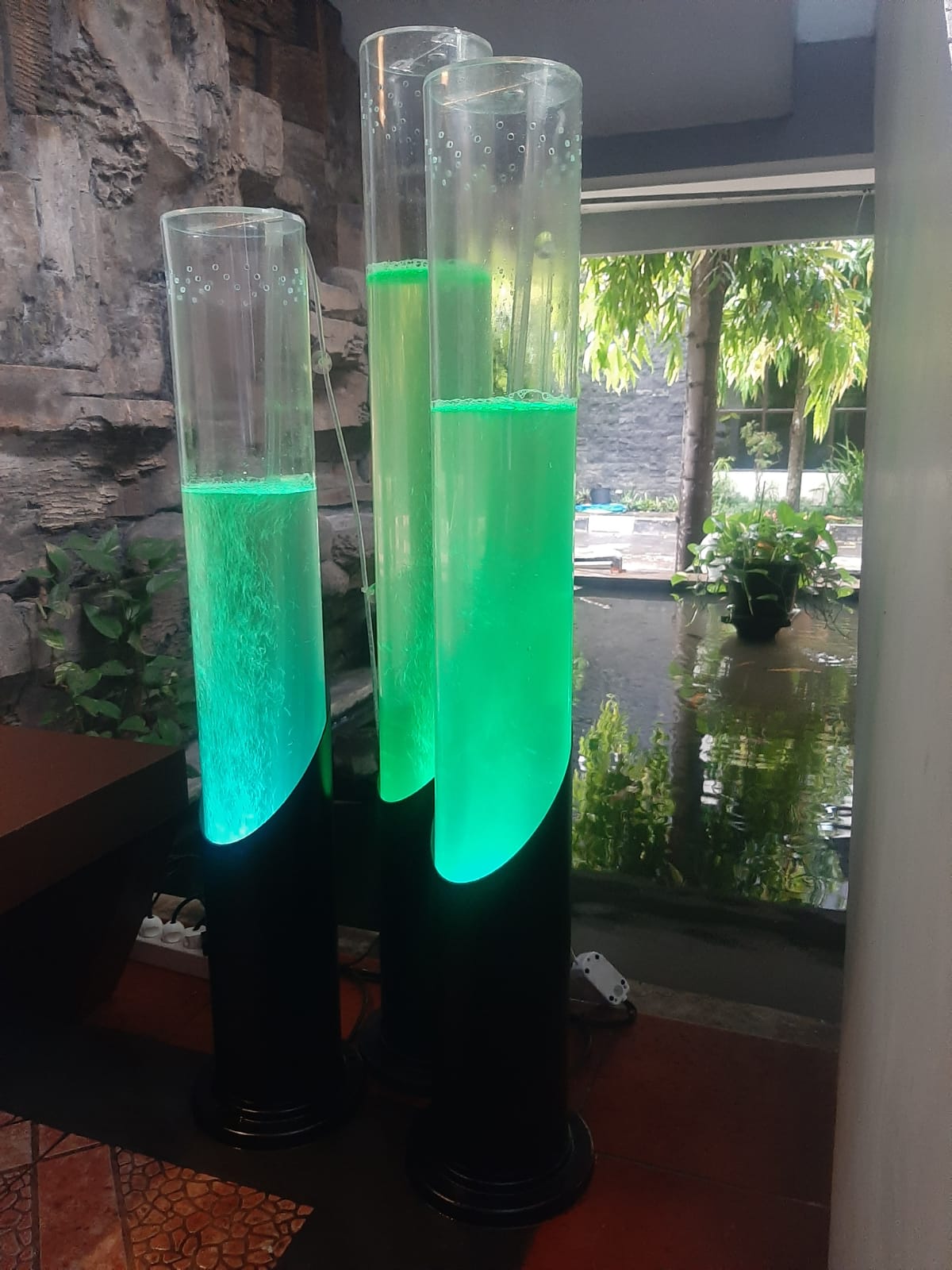Three microalgae experts from UGM, Professor Arief Budiman, Dr. Eko Agus Suyono, and Dr. Nugroho Dewayanto, have introduced an innovation called Algaerium and Algaetree, designed to reduce carbon dioxide (CO2) and pollutants.
They combine algae biotechnology with engineering and art to create a “liquid tree” that can improve air quality while having aesthetic value.
“Algaerium is designed to be installed indoors, while Algaetree is designed for outdoor use and is suitable for placement at intersections with high levels of CO2 pollution from motor vehicles. It can also be placed in green open spaces to produce oxygen and maintain air quality to keep it fresh,” explained Dr. Dewayanto of the Faculty of Engineering.
Microalgae are microorganisms that live in fresh or saltwater, performing photosynthesis to reproduce with sunlight and CO2. In the same area, microalgae can absorb CO2 up to 25 times more than other plants.
Algaerium applies decarbonization technology or CO2 absorption with microalgae. This device is suitable for indoor use to absorb CO2 and pollutants such as volatile organic compounds, such as the smell of paint, carpets, perfumes, and others trapped indoors.
These pollutants can be harmful as they can trigger what is known as a sick-building syndrome (SBS), which can result in a decline in mental health, affect brain performance, increase the potential for headaches and flu, and cause eye irritation.
“In buildings and skyscrapers, all sides are closed to prevent hot air from entering when the air conditioner is on. However, constructions like this will produce pollutants such as CO2 and VOCs, triggering SBS,” explained Professor Budiman, Director of the Center of Excellence for Microalgae Biorefinery.
He added that, besides being a place for cultivating microalgae with bioreactor technology, the design of Algaerium allows it to be a place for chatting, relaxing, or just taking photos due to its unique design.
“Algaerium is also often used for selfies because its overall design is very Instagrammable,” he said.
Unlike Algaerium, Algaetree, designed to reduce CO2 exposure on streets and in public open spaces, resembles a photobioreactor tube filled with microalgae that rises upward with a surface that can absorb CO2.
Algaerium and Algaetree result from the Matching Fund Program from the Ministry of Education for 2022-2023. They are a collaboration between PT Solusi Bangun Indonesia Cilacap, a business unit of PT Semen Indonesia (Persero) Tbk, and UGM.
In the PT SBI complex in Cilacap, the UGM microalgae team has also innovated an open pond cultivation system using a bubbling system. The UGM team has also built a 100,000-liter microalgae cultivation system to absorb CO2 from the cement plant.
Author: Center of Excellence for Microalgae Biorefinery, UGM Center for Energy Studies
Editor: Gloria


